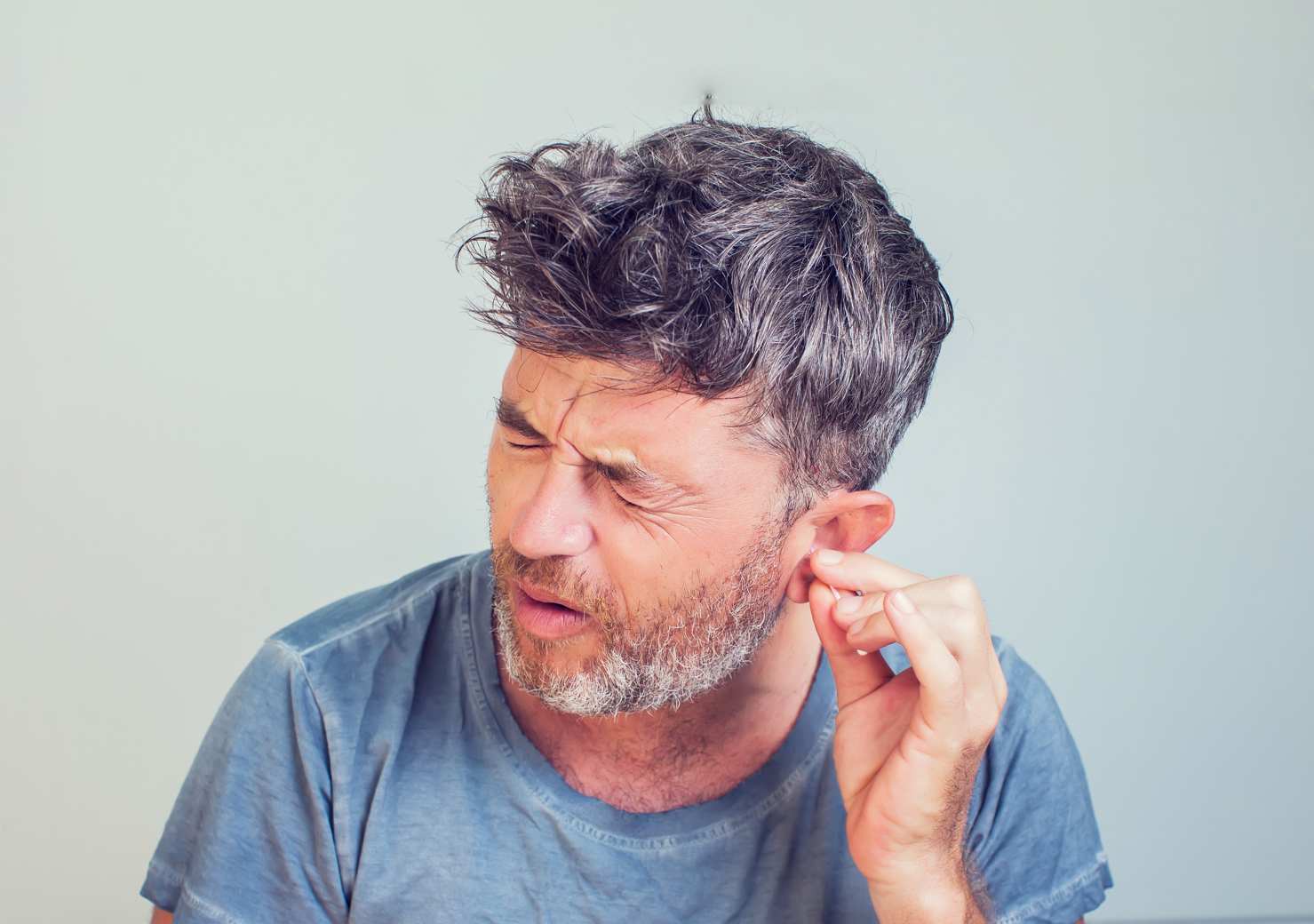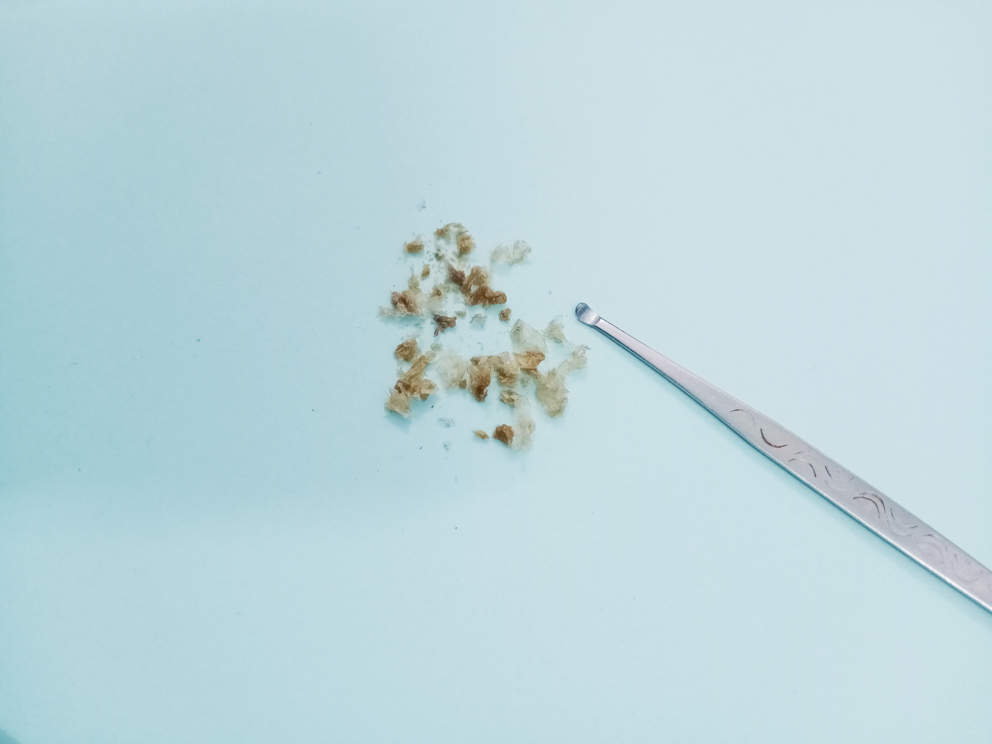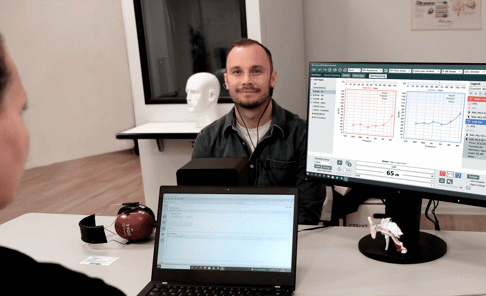
Earwax removal has become a hot topic in the UK where these services have declined so dramatically that 9.8 million people cannot currently get this treatment from the NHS (National Health Service), which one local hearing organization referred to as a “crisis”.
Many general practitioners (GPs) are no longer performing this service. For one thing, the healthcare labor shortage means clinicians are in high demand, and GPs are often focused on providing other medical treatments. In busy hospitals and clinics, some providers may consider earwax removal a lower priority than other potentially life-saving tasks. For another, certain antiquated earwax removal methods – such as manual water-filled syringes that flush out earwax – may use high water pressure that could damage a patient's ears. Additionally, some GPs mistakenly believe that earwax can be self-managed using wax-softening ear drops at home. However, there is no good evidence that earwax – even when softened by drops – will dissolve and disappear on its own.
The Dangers Of Excessive Earwax Buildup
Excess earwax buildup can cause a variety of problems if left untreated, including hearing loss, tinnitus, earache, vertigo, and infection. Earwax buildup can be bothersome and even painful, with nine out of 10 people recently reporting that impacted earwax bothers them, at least moderately.
Seniors are more likely to experience heavier earwax buildups than younger demographics, so the growing aging population is likely contributing to the increased demand for this service. Additionally, hearing aid wearers, especially those who have tight fitting or solid parts that are worn in their ear canal, may produce more earwax than others. Since the human body often identifies a hearing aid as a “foreign body,” it may produce more wax to push the device out.
An Earwax Removal “Crisis” in the UK

Some patients in the UK are frustrated that they can no longer access free earwax removal services. With the NHS overrun by demand for this service and many GPs not offering it anymore, many patients now must pay for private earwax removal services instead.
Private service providers often charge £50-£100 per visit for wax removal, which can add up, as some people need this service several times a year. Calling it a “tax on wax,” hearing loss charity RNID – formerly the Royal National Institute for Deaf People – said 26% of people cannot afford these costs, especially if they need multiple earwax removals per year.
The RNID called the shortage of free earwax removal services a “crisis” in England. Additionally, RNID said that NHS commissioners are “breaching official guidelines” by not providing free access to this service for all adults in the UK and, as a result, many people are turning to “dangerous” self-removal tactics instead.
According to the RNID, people who can’t get free earwax removal from the NHS have resorted to “do-it-yourself methods” of trying to remove their wax, using hair clips, paperclips, toothpicks, cotton buds or other objects. These at home methods can be dangerous and may cause potentially serious problems, including a perforated eardrum, hearing difficulties, infections, and tinnitus. What’s more, these do-it-yourself methods are often ineffective, with four out of five people unable to dislodge their earwax themselves, using items at home.
Debates Around Earwax Removal Regulations in the UK
Compounding the issues, earwax removal isn’t regulated in the UK as it is in other parts of the world, including the US. Yet, according to the RNID, less than half of Integrated Care Boards (ICB) who deliver healthcare in the UK are following NICE (National Institute for Health and Care Excellence’s) guidelines on proper ear wax removal.
The UK’s audiology professional bodies appear to agree on safe wax removal services and protocols through ongoing meetings of a National De-wax Access Group. The group’s goal is to agree on recommendations around minimum training and competency standards, as well as regulation options, moving towards consensus on safe wax removal services and protocols through ongoing meetings of a National De-wax Access Group. The group’s goal is to agree on recommendations around minimum training and competency standards, as well as regulation options.
A large part of the debate revolves around who is qualified to perform earwax removal services. Many within the audiology industry believe that people removing earwax should have a degree-level qualification in audiology, and/or be registered with the HCPC or RCCP/AHCS. They should also be properly trained in best practices around this service. However, with no regulations in the UK, this can be difficult to enforce.
The media headlines show that the lack of regulation around earwax removal in the UK has become a more pressing and prominent issue recently due to the increased demand for the service, the ending of free earwax removal services from many GP practices, and a recruitment crisis in the audiology industry. As a result, there are concerns that patients may seek this service from unqualified people who may not have proper training and may actually harm patients’ hearing health by not following best practice protocols. Further, it’s concerning that people who may not be able (or willing) to pay for private earwax services are turning to do-it-yourself methods that could lead to ear infection, permanent hearing loss, as well as serious damage to the ear canal or eardrum.
Some people in the UK advocate for equal service provision for all, wanting providers to follow NICE (National Institute of Health and Care Excellence) guidelines for proper earwax removal, regulate earwax removal services, and provide access to free professional wax removal services to anyone in need.
What The Industry Is Saying
The British Society of Audiology (BSA) and the British Academy of Audiology (BAA) have issued a joint statement saying they believe that all patients should be able to access safe, effective earwax removal services delivered by trained, competent professionals. They want these services to be available for free, where possible, through the NHS. However, with today’s challenges, they recognize that some consumers may choose (or need) paid earwax removal services instead.
In their statement, BSA and BAA said they share concerns regarding the skill levels of some individuals being trained, the inconsistent delivery of services, and the lack of regulation around earwax removal. Additionally, the BSA and BAA said that Qualified Clinical Scientists (CS) in audiology, audiologists, hearing aid dispensers (HAD), and nurses have the training and experience to perform wax removal and have met the BSA Minimum Training Guidelines for Aural Care. This includes the understanding of relevant anatomy and physiology, correct use of equipment, health and safety risks associated with the procedure, and more. The BSA and BAA added that all trained providers should, at the very least, have completed the BSA Minimum Training Guidelines for the procedure.
Meanwhile, RNID has called for action, urging people to get involved and demand change. RNID said the current situation contradicts clear guidance from the NICE (National Institute of Health and Care Excellence), the organization that recommends which services should be available through the NHS. NICE guidelines say that GP surgeries should remove earwax if it’s contributing to a patient’s hearing loss or causing other symptoms, as excess wax often does. RNID also wants the NHS to distribute patient information about earwax to help people more safely manage their earwax from home.
The National De-wax Access Group vows to “collaboratively define the most effective path forward,” but it remains unclear what this will look like and what it will mean for patients or providers.
How Resource Optimization Can Help The Crisis
Since there are currently not enough clinicians to administer hearing tests, fit hearing aids, remove earwax, and perform other necessary hearing health services, clinics and hearing care organizations in the UK need to train more people to do services like wax removals and optimize their resources.
Hearing clinics could think about how assistant roles can support audiologists and hearing aid dispensers and help them be more efficient in performing hearing examinations and fitting hearing aids. If hearing care assistants can help audiologists and hearing aid dispensers with things like screenings, follow-up services, and aftercare appointments, it can help relieve audiologists to focus on services that assistants aren’t able to do, like hearing aid fittings.
As hearing aid clinics hire more employees – including assistants – they should rely on reputable training providers to ensure that the new employees understand (and follow) the proper protocols for earwax removal. The trainers (and related resources) should have approval from a reputable industry association, such as BSHAA, which provides quality assurance on the training. Clinics should also consider the qualification levels of trainers delivering training, what post-training follow-up looks like, and what kind of post-training support the assistants will receive. Hearing clinics should also ensure that the assistants spend time with more experienced providers to help improve their skills and confidence before working solo with patients.
Audiology Practice Management Software
Ensure Quality and Free Up Time Where it Matters With Auditdata Manage
Auditdata Manage offers a clear, concise view of scheduled appointments, including patient information and appointment type, to help your staff can stay organized, boost productivity, and provide the best possible patient care.
Manage allows hearing care professionals to see the information that needs to be recorded at various parts of the hearing care journey, giving clinicians and assistants clear, accurate, real-time patient records.
No matter the way forward, there’s widespread agreement that there aren’t enough trained professionals in the UK to keep up with the growing demand for earwax removal. And many within the industry are expressing concern that if it becomes easier for more untrained or unregistered people to provide earwax removal services, it increases the associated risks, such as a potentially higher occurrence of injuries and a lack of oversight to ensure gold standard protocols are being consistently followed.
The hearing industry must help ensure that organizations and people performing this service are properly trained and registered.
When a business is CQC registered – or a provider is HCPC registered – it shows that they’re properly trained and responsible for ensuring the wax removal is being done correctly. Businesses and individuals who are registered must comply with proper standards, and they’re trained in performing this service safely. If something unexpected happened and a patient had a complaint, they could go to the CQC or HCPC for resolution.
On the other hand, if someone isn’t registered, they aren’t regulated. You don’t know for sure how they were trained, how they’re supervised, and who is responsible for ensuring the wax removal is being done responsibly and properly.
The Importance of Proper Wax Removal Training
Regardless of how the earwax removal regulation and debates play out, it remains essential that anyone performing this important service is properly trained to do so safely.
BSHAA (The British Society for Hearing and Audiology) provides guidelines and best practices around proper earwax removal. Only the following wax removal methods are recognized as approved:
- Microsuction, which is the preferred method and considered to be the most modern, most advanced, safest, and pain-free form of ear wax removal.
- Manual instrumentation such as curettes and forceps.
- Irrigation (electronic only).
The BSHAA does not support or recommend the use of:
- Manual syringing
- Self-irrigation
- Hopi candles
- Any manual device used by the patient themselves
The BSHAA’s wax removal courses teach audiologists and other medical professionals how to properly remove earwax, using several different types of removal. Tools such as curette and alligator tweezers can quickly remove most wax, especially if there isn’t a complete blockage. Suction can be used to pull wax out, and removal by irrigation is another option.
Other Blogs You Might Enjoy:

What Do Your Hearing Aid Users Need?
If someone suspects they have hearing loss, they should see an audiologist for a hearing screening to determine whether they need hearing aids. But then what happens? This blog explains how to give your patients what they need for success with their hearing aids, such as setting proper expectations, providing care and maintenance tips for the devices, offering valuable tips before they buy, and providing ongoing aftercare.

Are Real Ear Measurements Necessary?
Real Ear Measurements (REM) – also called Probe Microphone Measurements (PMM) – are considered the gold standard in hearing aid fitting and verification, allowing audiologists to determine whether a hearing aid user is receiving the precise level of amplification needed at every frequency to maximize their hearing. This blog explains how REM can improve customers’ hearing, as well as drive better business outcomes and serve as a key differentiator for hearing clinics.

Common Audiometry and Hearing Loss Myths
Hearing loss is a prevalent condition that can significantly impact an individual's quality of life, yet misconceptions surrounding audiometry tests and hearing loss persist. This article aims to debunk common myths, providing clarity on the audiometric process and the nature of hearing impairment. By dispelling these misconceptions, we can foster a more informed and understanding approach to hearing health.
Don't Miss Out On the Latest Insights On Audiology
Sign up today to receive exciting updates, tips, and the latest newsletters from Auditdata.
Resources:
⭐️ Audiology Practice Management Software, Manage
⭐️ People awaiting ear wax removal in England face NHS ‘postcode lottery
⭐️ NHS staff shortages in England could exceed 570,000 by 2036, leaked document warns
⭐️ Earwax removal no longer available at GP surgeries – leaving many struggling to hear
⭐️ Hearing loss in adults: assessment and management
⭐️ Ear wax management in primary care: what the busy GP needs to know
⭐️ Our Ageing Population | The State of Ageing 2023-24
⭐️ State Cerumen Management Requirements
⭐️ Who is removing your ear wax?
⭐️ UK associations work towards consensus amid wax removal controversy
⭐️ BSA & BAA Joint Statement on Wax Removal
⭐️ Everything you need to know about joining, renewing and leaving the HCPC Register
⭐️ We're CQC, the independent regulator of health and social care in England
⭐️ https://earwaxremoval.uk/treatments/microsuction
⭐️ Help us demand an urgent review of ear wax removal services




